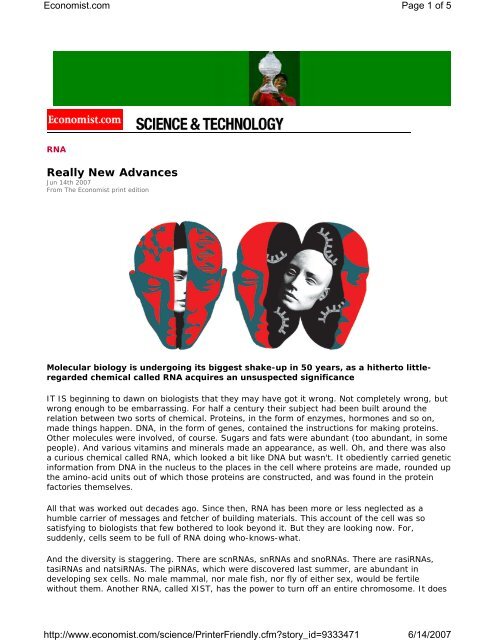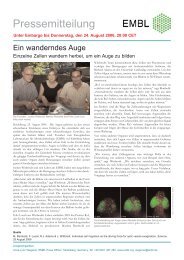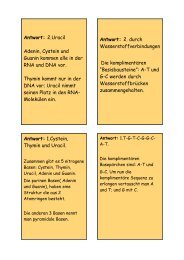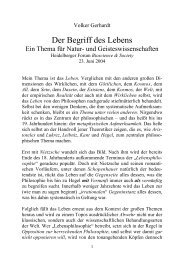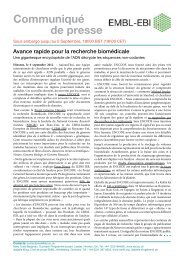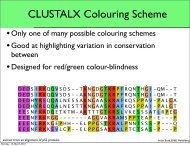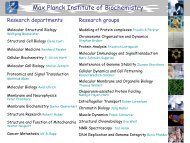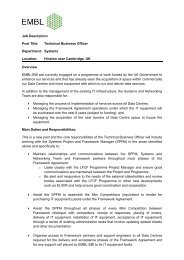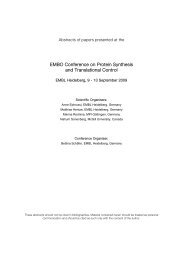Media Clips - EMBL
Media Clips - EMBL
Media Clips - EMBL
Create successful ePaper yourself
Turn your PDF publications into a flip-book with our unique Google optimized e-Paper software.
Economist.com<br />
RNA<br />
Really New Advances<br />
Jun 14th 2007<br />
From The Economist print edition<br />
Page 1 of 5<br />
Molecular biology is undergoing its biggest shake-up in 50 years, as a hitherto littleregarded<br />
chemical called RNA acquires an unsuspected significance<br />
IT IS beginning to dawn on biologists that they may have got it wrong. Not completely wrong, but<br />
wrong enough to be embarrassing. For half a century their subject had been built around the<br />
relation between two sorts of chemical. Proteins, in the form of enzymes, hormones and so on,<br />
made things happen. DNA, in the form of genes, contained the instructions for making proteins.<br />
Other molecules were involved, of course. Sugars and fats were abundant (too abundant, in some<br />
people). And various vitamins and minerals made an appearance, as well. Oh, and there was also<br />
a curious chemical called RNA, which looked a bit like DNA but wasn't. It obediently carried genetic<br />
information from DNA in the nucleus to the places in the cell where proteins are made, rounded up<br />
the amino-acid units out of which those proteins are constructed, and was found in the protein<br />
factories themselves.<br />
All that was worked out decades ago. Since then, RNA has been more or less neglected as a<br />
humble carrier of messages and fetcher of building materials. This account of the cell was so<br />
satisfying to biologists that few bothered to look beyond it. But they are looking now. For,<br />
suddenly, cells seem to be full of RNA doing who-knows-what.<br />
And the diversity is staggering. There are scnRNAs, snRNAs and snoRNAs. There are rasiRNAs,<br />
tasiRNAs and natsiRNAs. The piRNAs, which were discovered last summer, are abundant in<br />
developing sex cells. No male mammal, nor male fish, nor fly of either sex, would be fertile<br />
without them. Another RNA, called XIST, has the power to turn off an entire chromosome. It does<br />
http://www.economist.com/science/PrinterFriendly.cfm?story_id=9333471<br />
6/14/2007


